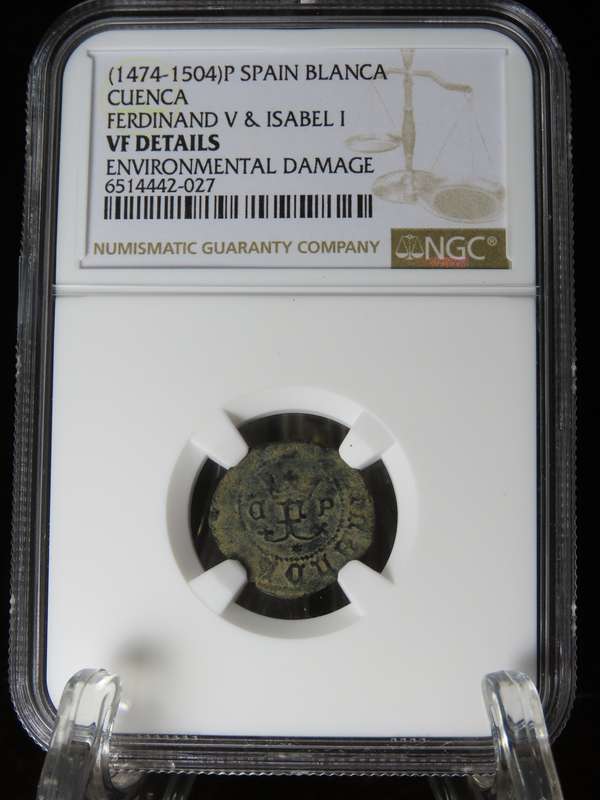
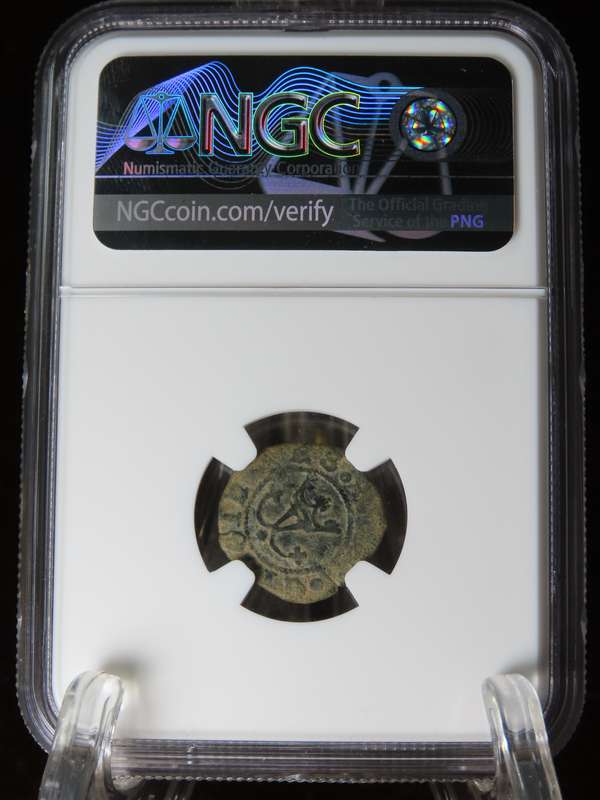
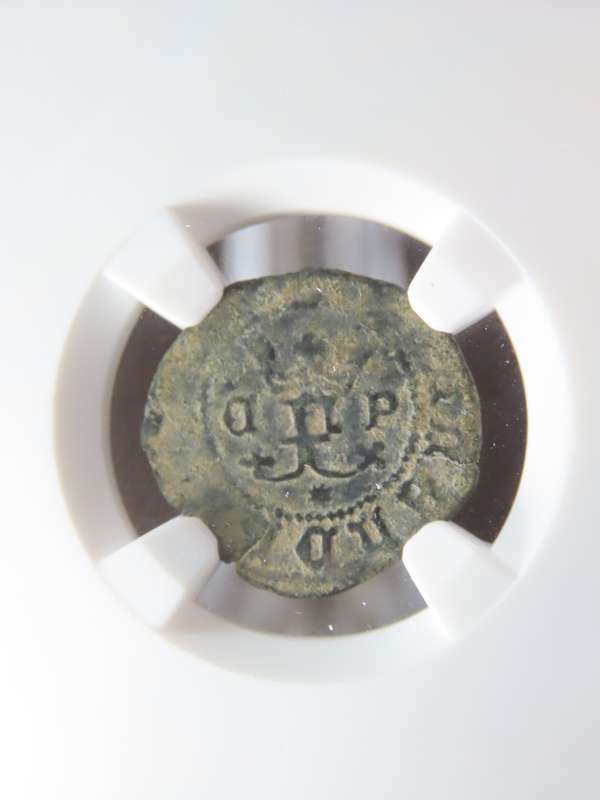
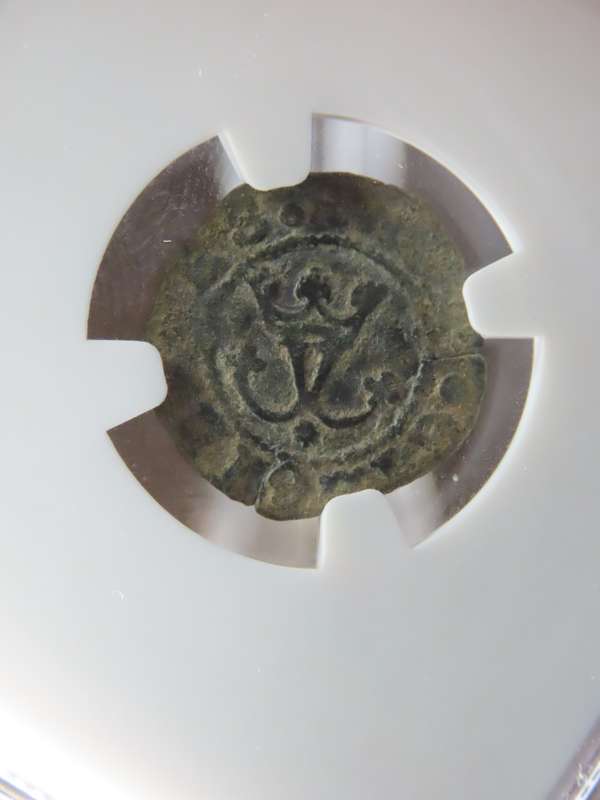
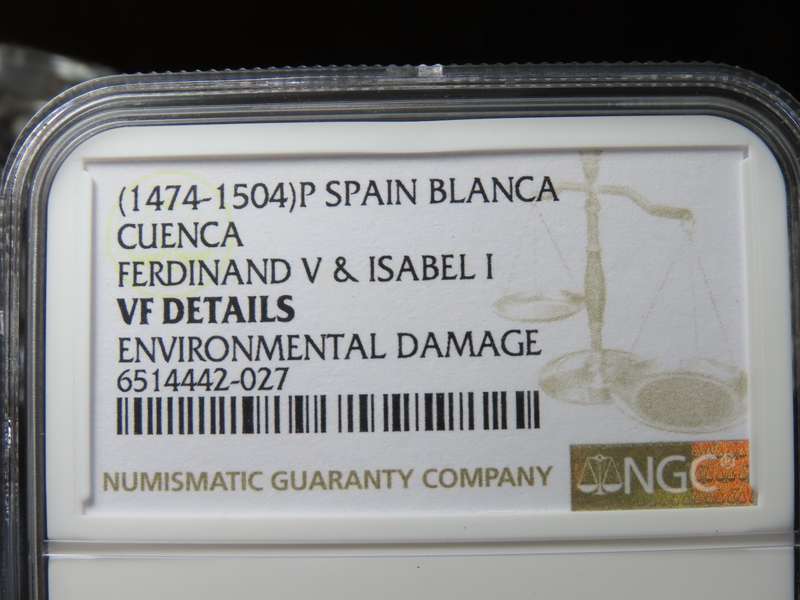





Spanish Shipwreck Blanca, 1474 to 1504, Ferdinand V Isabel I, NGC VF - Cuenca
Check my rate
| Main centres: | 1-3 business days |
| Regional areas: | 3-4 business days |
| Remote areas: | 3-5 business days |










| Main centres: | 1-3 business days |
| Regional areas: | 3-4 business days |
| Remote areas: | 3-5 business days |
Spain - Ferdinand V & Isabel I
1474 - 1504
NGC - VF Details
Spanish Blanca Coin - Cuenca Mint





A NGC VF Details - Environmental Damage. A Possible Shipwreck Coin
Ferdinand V of Aragon and Isabella I of Castile were the same monarchs commonly referred to as the Catholic Monarchs. Ferdinand is often called Ferdinand II when referring to his rule in Aragon, but he is also referred to as Ferdinand V in the context of Castile, reflecting his position as king consort to Isabella.
Their union in 1469 brought together the crowns of Castile and Aragon, laying the foundation for the unified Spanish monarchy. While they ruled their respective kingdoms independently in many aspects, they coordinated policies on major issues such as the completion of the Reconquista in 1492, the establishment of the Spanish Inquisition, and the sponsorship of Christopher Columbus' voyages that led to the discovery of the New World.
The titles Ferdinand V and Isabella I highlight their joint legacy as architects of Spain's rise as a major European and global power.Ferdinand II of Aragon (14521516) and Isabella I of Castile (14511504) were the Catholic Monarchs whose marriage in 1469 united Spain's two largest kingdoms, creating the foundation for a unified Spanish state. Together, they centralized royal authority, reduced the power of the nobility, and reformed the Spanish government and military.
Ferdinand and Isabella are best known for completing the Reconquista in 1492 by capturing Granada, the last Muslim stronghold in Spain. They also established the Spanish Inquisition to enforce religious uniformity. That same year, they sponsored Christopher Columbuss voyage, leading to the discovery of the New World and the expansion of the Spanish Empire.
Their reign marked a turning point in Spanish history, with significant achievements in exploration, state-building, and religious policy. However, their forced conversions and expulsions of Jews and Muslims remain controversial. Ferdinand continued to rule as Regent of Castile after Isabella's death, preserving their legacy of a powerful, centralized Spain.
The blanca was a denomination of coin used in medieval and early modern Spain, including during the late 15th century. It was a low-value coin, typically made of vellón, a mixture of copper and a small amount of silver. The blanca was widely circulated and commonly used for everyday transactions by the general population.Blancas served as part of the broader monetary system of the time, which also included higher denominations like reales and maravedís. These coins reflect the economic and administrative consolidation that Ferdinand and Isabella undertook during their reign..